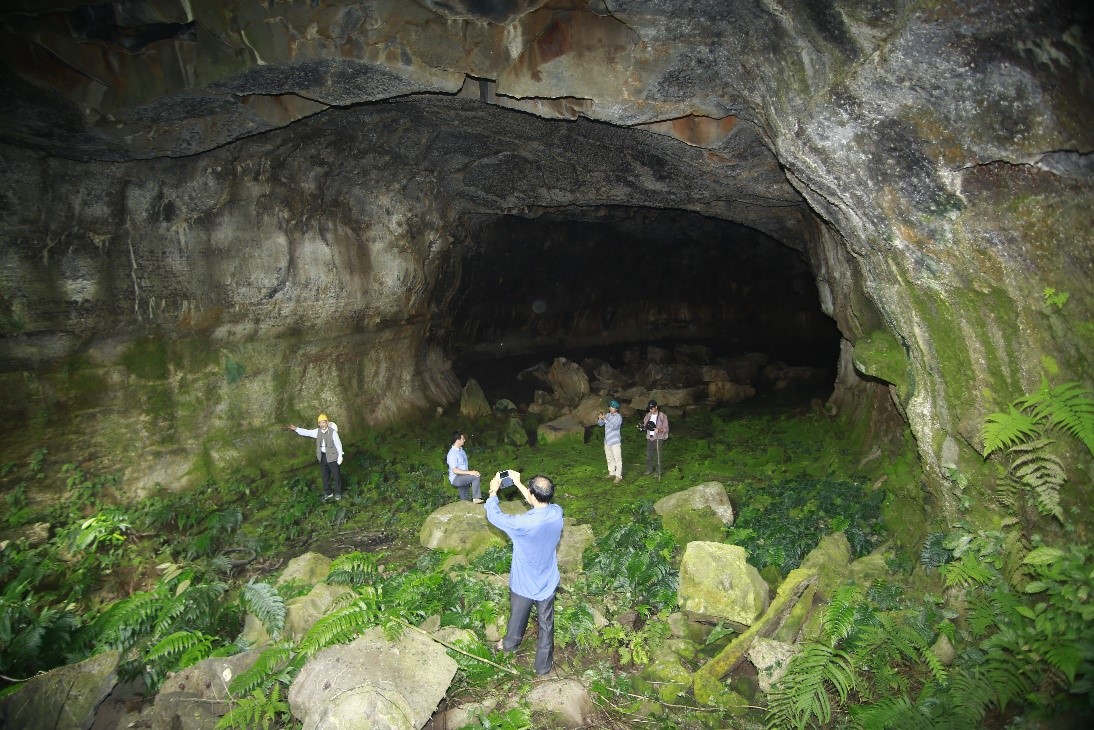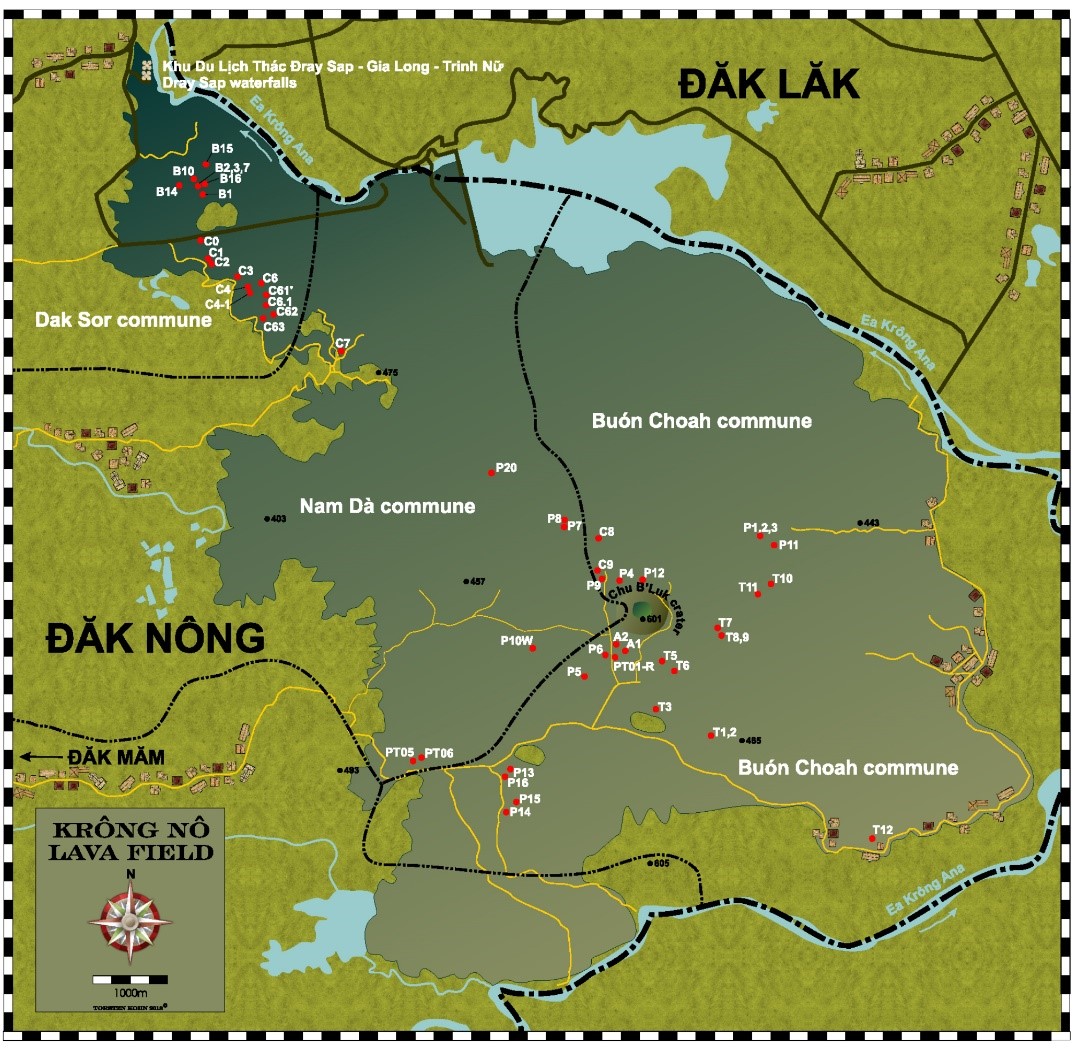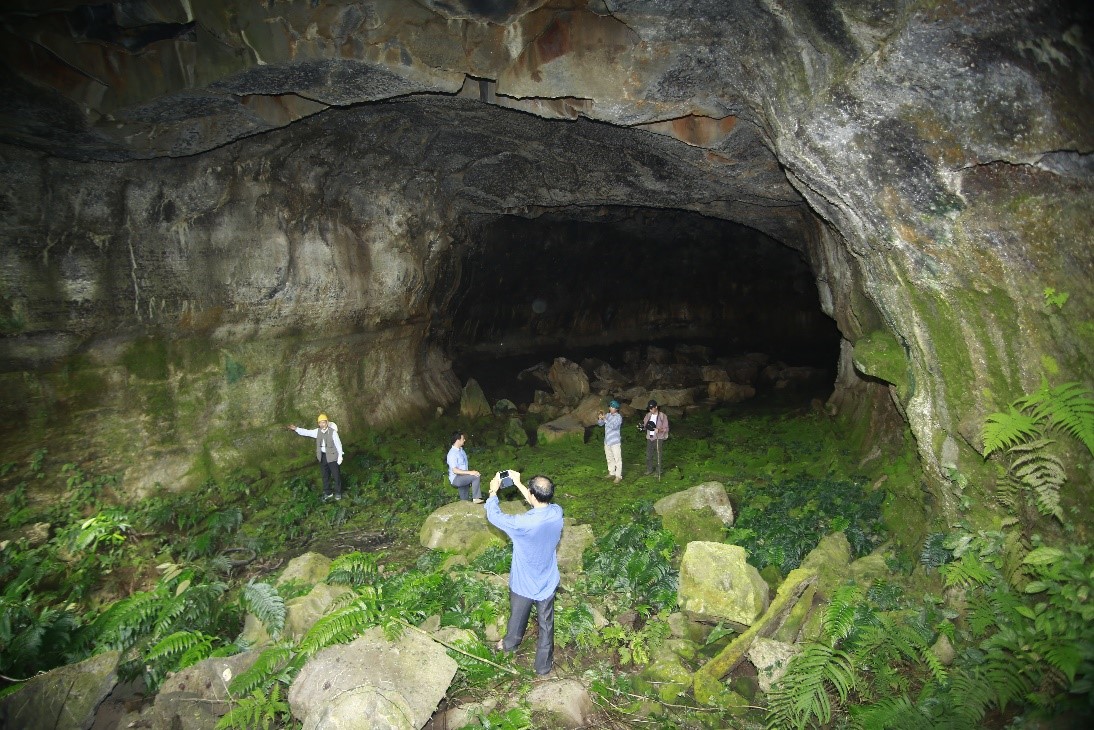
If the northern provinces of Vietnam attract visitors by magnificent and magical limestone caves, then the Central Highlands, especially Dak Nong Geopark (in Dak Nong Province), gives the impression of the Nature's wonder and secret of the rare and large lava tube cave system.

Map of the volcanic caves distribution in Dak Nong Geopark - Photo: Dak Nong Geopark Management Board
In 2014, after more than 7 years of research, scientists from the Japan Volcanic Cave Association discovered the Southeast Asia's largest and longest volcanic cave system in Dak Nong Province (now in the territory of Dak Nong Geopark which was built at the end of 2015).
This volcanic cave system (about 50 surveyed and mapped caves with a total length of more than 10 km) is the most significant and unique geological heritage of Dak Nong Geopark, as a result of volcanic eruptions occurred millions of years ago.
Unlike limestone caves' secondary origin, volcanic caves are of primary origin because they are formed during the lava eruption and solidification. This is one of the most scentific interests, attracting many researchers' and tourists' attention.
So far, scientists have identified that the lava caves found in the area are only related to the eruption of the Nam Blang volcano, though there are 5 craters discovered in Dak Nong Geopark, including: Nam Dong, Bang Mo volcano (Cu Jut district), Nam Blang, Nam Kar volcano (Krong No district) and Nam Gle volcano (Dak Mil district).
If Nam Blang volcano is the heart of the lava field then the extensive caves resemble its "blood veins". In particular, the C7 lava tube cave (1,066.5m) has been recorded to lead Southeast Asia in terms of scale, length, uniqueness. The A1 cave (456.7m) ranked fifth after C3 cave (594.4m) ranked second... In these caves, there are many structures typical for volcanic eruptions such as lava vents, sinkholes.
In addition, archaeologists also found vestiges of prehistoric inhabitants such as stone tools, pottery, animal bones, ancient burial tombs, etc in some caves, typically in C6, C6-1 cave. This important finding opens a new turning point for Vietnamese paleontology because of the fact that no remains of prehistoric inhabitants have been discovered in volcanic caves all over the world before.
Up to now, in addition to C3 and C4 caves which have been deployed by Dak Nong authority as a tourist destination, other lava caves within Dak Nong Geopark have not been officially put into tourism exploitation due to lack of safety assessing research.
Quite different from the structure of the limestone cave, the lava tube cave has weak and unstable structure. Therefore, visitors should not spontaneously explore the caves that have not been exploited for tourism in Dak Nong Geopark without wearing safety equipment.

C6-1 Cave which found vestiges of prehistoric residence - Photo: Ton Ngoc Bao
How to reach C3, C4 caves?
C3 and C4 caves which are connected to each other with a length of 968m are located in the area of Dray Sap - Gia Long waterfall cluster and inside the Dray Sap Tourist Attraction. Thus, visitors have to buy entrance tickets for this destination. There is a system of panels and signs inside the tourist area, to guide visitors to the caves' entrance.
It is not difficult to enter the cave, however, visitors should be careful when stepping on the big and sprawling volcanic bombs at the cave's entrance. Inside the caves are a series of typical formations such as lava stalactites, lava seal, lava tree mold etc which are easy to be observed. Standing inside the vast underground cave, visitors can clearly feel and sense the powerful movements and destroyable energy of lava flows occured million years ago on this land.
The volcanic caves in Dak Nong Geopark are not only of scientific, aesthetic and educational value but an ideal destination for travelers to explore and respect our Mother Nature.
Bach Van